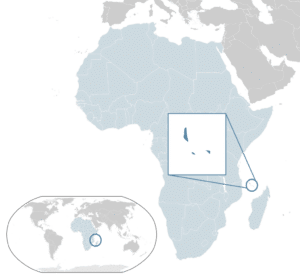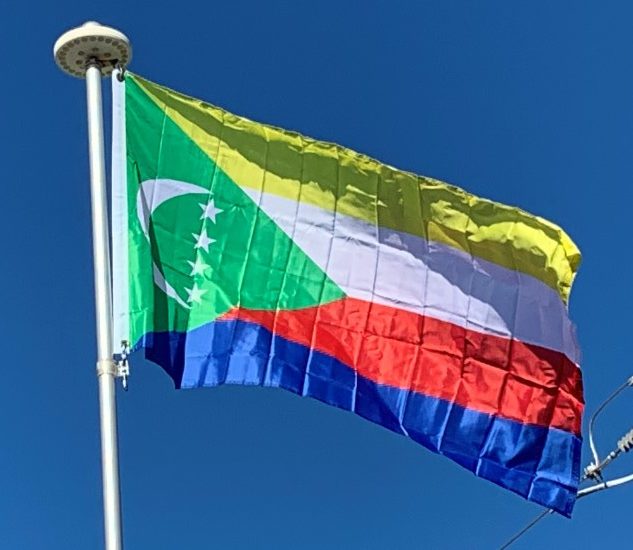Introduction:
The Comoros, officially the Union of the Comoros, is an island country in the Indian Ocean located at the northern end of the Mozambique Channel off the eastern coast of Africa between northeastern Mozambique, the French region of Mayotte, and northwestern Madagascar. The capital and largest city in Comoros is Moroni. The religion of the majority of the population is Sunni Islam.
At 1,660 km2 (640 sq mi), excluding the contested island of Mayotte, the Comoros is the fourth-smallest African nation by area. The population, excluding Mayotte, is estimated at 832,322. As a nation formed at a crossroads of different civilizations, the archipelago is noted for its diverse culture and history. The archipelago was first inhabited by Bantu speakers who came from East Africa, supplemented by Arab and Austronesian immigration.

The sovereign state is an archipelago consisting of three major islands and numerous smaller islands, all in the volcanic Comoro Islands. The major islands are commonly known by their French names: northwestern-most Grande Comore (Ngazidja), Mohéli (Mwali), and Anjouan (Nzwani). In addition, the country has a claim on a fourth major island, southeastern-most Mayotte (Maore), though Mayotte voted against independence from France in 1974, has never been administered by an independent Comoros government, and continues to be administered by France (currently as an overseas department). France has vetoed United Nations Security Council resolutions that would affirm Comorian sovereignty over the island. In addition, Mayotte became an overseas department and a region of France in 2011 following a referendum passed overwhelmingly.
It became part of the French colonial empire in the end of 19th century before becoming independent in 1975. Since declaring independence, the country has experienced more than 20 coups d’état or attempted coups, with various heads of state assassinated. Along with this constant political instability, the population of the Comoros lives with the worst income inequality of any nation, with a Gini coefficient over 60%, while also ranking in the worst quartile on the Human Development Index. As of 2008 about half the population lived below the international poverty line of US$1.25 a day. The French insular region of Mayotte, which is the most prosperous territory in the Mozambique Channel, is the major destination for Comorian illegal immigrants who flee their country. The Comoros is a member state of the African Union, Francophonie, Organisation of Islamic Cooperation, Arab League (of which it is the southernmost state, being the only member state of the Arab League with a tropical climate and also entirely within the Southern Hemisphere) and the Indian Ocean Commission. Other countries near the Comoros are Tanzania to the northwest and the Seychelles to the northeast. Its capital is Moroni, on Grande Comore. The Union of the Comoros has three official languages—Comorian, Arabic, and French.
Etymology:
The name “Comoros” derives from the Arabic word قمر qamar (“moon”).
History:
Pre-Colonial Peoples:
The first human inhabitants of the Comoro Islands are thought to have been Austronesian settlers travelling by boat from islands in Southeast Asia. These people arrived no later than the sixth century AD, the date of the earliest known archaeological site, found on Nzwani, although settlement beginning as early as the first century has been postulated.
